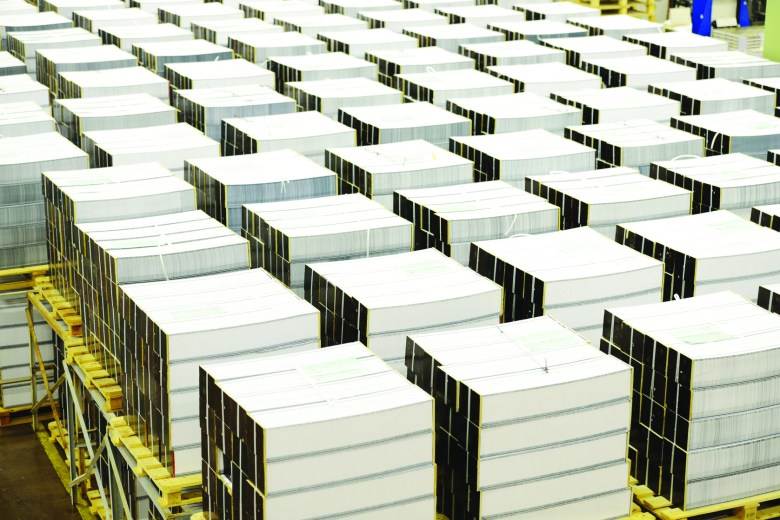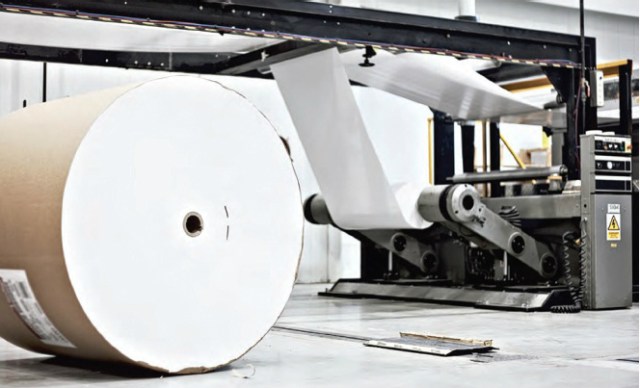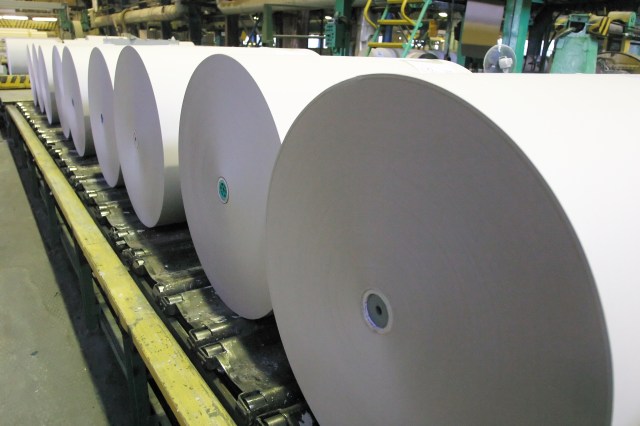
The cost of paper has sharply risen recently and its impact has been felt by printers across Australia. With as much as 50 per cent of a book’s production cost going to paper stock, solutions are needed to limit the impact on the book industry and readers.
Paper mills worldwide, especially in Europe and Asia, have raised prices. It is now affecting prices domestically, with the last two years displaying a steady incline in local paper prices. An increase in 2017 was recorded as between 6-8 per cent and then two increases in 2018 have been recorded at 6-8 per cent and 5-7 per cent. Suppliers have been working hard to mitigate the severity of the increases, but some of the costs have inevitably been passed onto printers and publishers.
According to Richard Celarc, executive chairman, Opus Group, there are three main reasons. “The cost escalation is due to an increase in paper pulp pricing (overall there was a 23 per cent increase between March 2017 and March 2018) coupled with the weakening Australian dollar. There’s also been the rising freight and energy costs experienced in Australia. And to add salt to the wounds, constraints on supply due to government reforms in China.”
On top of the factors resulting in the price of paper going up, paper stock options are reducing too. There’s been a discontinuation of three key bulk stocks for art paper and uncoated woodfree paper, and an increase on pricing for the best alternative equivalent.
Celarc says, “These changes in stock availability and cost have surprised us. It has been the perfect storm this year. And unfortunately we’re expecting more price hikes in 2019. This is truly a here-and-now issue for printers and Australian publishers.”
Thad McIlroy, international publishing researcher and consultant, says, “Pulp and paper is best viewed as a commodity and its pricing matches the commodity model: cyclical price increases largely instigated by the suppliers. With the overall decline in print manufacturing since roughly the turn of the millennium, the paper manufacturers have been scrambling, and struggling, to match supply with demand, and hence to maintain prices at profitable levels.
“They have finally managed to pull enough supply out of the market for prices to increase based on demand. But demand will drop in the face of the prices so equilibrium will once again be reached. The question is, how long will that take? Because of long lead times in adding (or subtracting) manufacturing capacity, it will be several years.”
Opus Group notes, “The reduction in supply is partly due to paper mills either closing down or switching from manufacturing graphics paper to packaging in search of better margins.”
Back in Australia, the companies most affected by these paper changes are the bigger publishers, but while the smaller publishers will see price increases, there’s more agility with their shorter print runs.
From the Australian printers’ perspective, there is a real threat of losing contracts to overseas suppliers. However overseas suppliers often require three months’ lead time, which doesn’t work for local publishers’ project timeframes.
Larger publishers are under contract with printers, and within these contracts there’s a “rise and fall” clause for the cost of stock but a 23 per cent increase is massive when you’re spending roughly $6m annually on paper and printing.
Louise Sherwin-Stark, CEO, Hachette Australia & New Zealand says: “We endeavour to print as much as possible onshore. This strategy is not limited to our Australian books, as printing the bulk of our international frontlist improves our speed to market, reduces our freight costs, particularly expensive and environmentally costly airfreight. Printing locally is the best option to ensure Australian readers can access the books they want to read as soon as possible and supports the local print industry and jobs. The sharp increase in paper prices is a major concern.”
Printers like the Opus Group are actively working towards solutions. Celarc explains, “Our first objective is to be honest with publishers and work collaboratively with them to find outcomes that benefit both parties. If we work together, we are more likely to find the best case scenario out of the difficulties.
“Our publisher clients have been really understanding. They’re remaining loyal and contributing to finding ways to keep the business in Australia. There’s been good negotiation and problem-solving going on.”
To take these one-on-one negotiations to the broader situation, Celarc says he would like to see a round table to discuss the price and availability of paper with publishers and suppliers, printers.
Another solution? Opus Group would like to see the conversations that were started with parliamentarians at the Print2Parliament event in October to continue.
Celarc explains, “We shared with those parliamentarians present at the event the journey of the book printing process – something that many of them had never experienced before.
“We want our leaders to understand the process of sourcing paper and printing in Australia and also its value economically. There are investment solutions to be discussed that could safeguard the printing industry in Australia.”
Source: Australian Publishers Association
Comment below to have your say on this story.
If you have a news story or tip-off, get in touch at editorial@sprinter.com.au.
Sign up to the Sprinter newsletter


